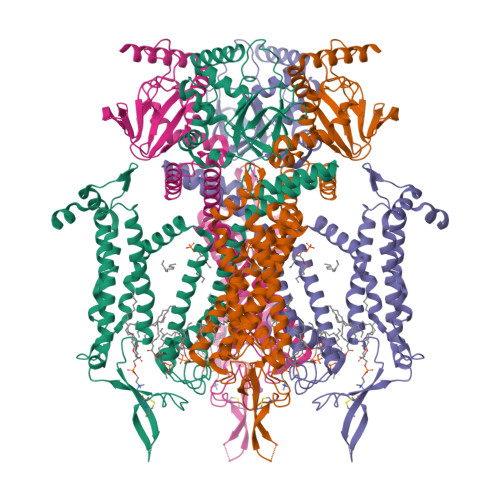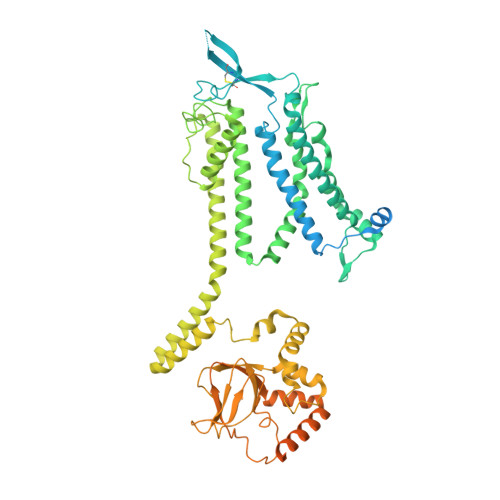Mechanism of ligand activation of a eukaryotic cyclic nucleotide-gated channel.
Zheng, X., Fu, Z., Su, D., Zhang, Y., Li, M., Pan, Y., Li, H., Li, S., Grassucci, R.A., Ren, Z., Hu, Z., Li, X., Zhou, M., Li, G., Frank, J., Yang, J.(2020) Nat Struct Mol Biol 27: 625-634
- PubMed: 32483338
- DOI: https://doi.org/10.1038/s41594-020-0433-5
- Primary Citation of Related Structures:
6WEJ, 6WEK, 6WEL - PubMed Abstract:
Cyclic nucleotide-gated (CNG) channels convert cyclic nucleotide (CN) binding and unbinding into electrical signals in sensory receptors and neurons. The molecular conformational changes underpinning ligand activation are largely undefined. We report both closed- and open-state atomic cryo-EM structures of a full-length Caenorhabditis elegans cyclic GMP-activated channel TAX-4, reconstituted in lipid nanodiscs. These structures, together with computational and functional analyses and a mutant channel structure, reveal a double-barrier hydrophobic gate formed by two S6 amino acids in the central cavity. cGMP binding produces global conformational changes that open the cavity gate located ~52 Å away but do not alter the structure of the selectivity filter-the commonly presumed activation gate. Our work provides mechanistic insights into the allosteric gating and regulation of CN-gated and nucleotide-modulated channels and CNG channel-related channelopathies.
Organizational Affiliation:
Department of Biological Sciences, Columbia University, New York, NY, USA.





















